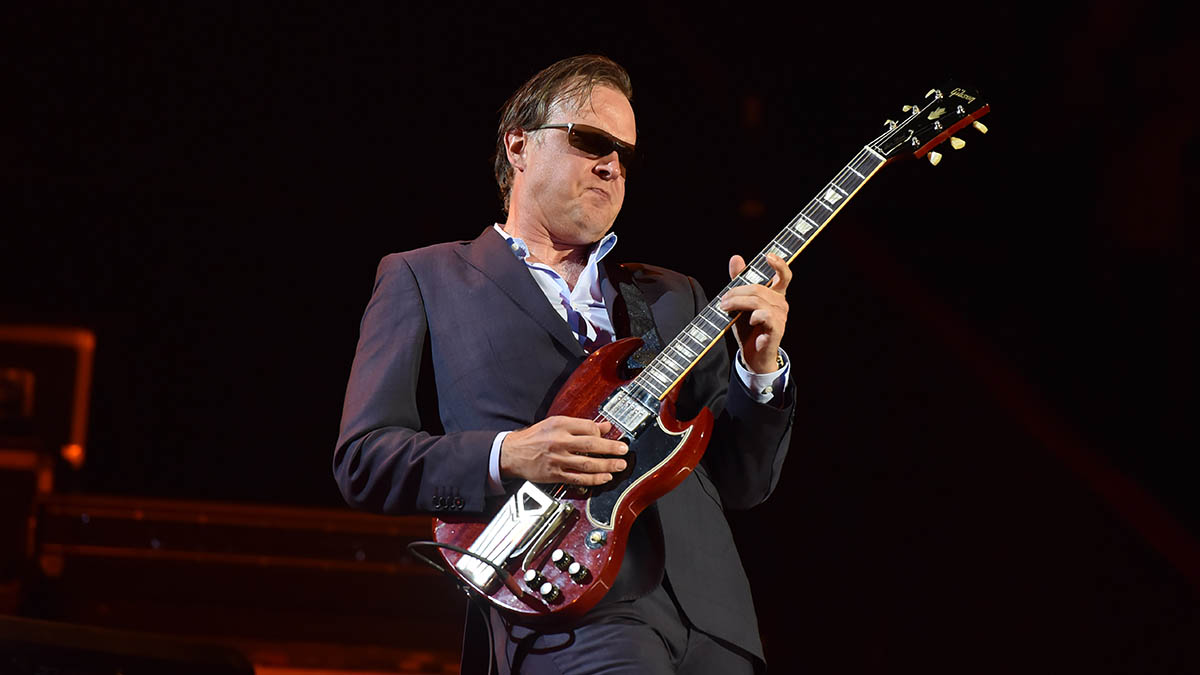Joe Bonamassa unpacks the influence behind his super-premium guitar tone – “It’s the two Erics, Clapton and Johnson”
Not too bright, throaty and musical – that's just how Bonamassa likes his tone, and he says a Dumble and a 'Burst are “not a prerequisite” for creating the sound in his head

As the world’s highest-grossing blues guitar superstar and curator of what is surely one of the greatest collections of vintage electric guitars and guitar amps on the planet, Joe Bonamassa’s tone is Magnetic North for many guitar players. His tone is reference quality, the exemplar.
But just how can we recreate it? Do we need a Gibson Les Paul Standard from the year of our Lord, 1959, or a 1954 Fender Stratocaster? A tube amp crafted by the late Howard Alexander Dumble would be a Holy Grail choice, the missing link if you have a six-figure budget.
In a recent conversation with Inside Blackbird, hosted on Blackbird Studio’s newly launched subscription series, Bonamassa says not. All these great tools help but we have to look beyond the gear. “You don’t need a Dumble,” he said. “You don’t need a ’59 Les Paul. Those do help in the search… But it’s not a prerequisite for success.”
Where it all starts, he explains, is with a sensibility, a sound that’s in your head. Where did Bonamassa get his? he is asked. Well, it’s quite simple.
“I would say it’s the two Erics, Clapton and Johnson, right in the middle of their sounds,” he said. Those were his two lodestars. And once you know what you want to sound like, that’s half the battle. Never mind gear acquisition, he says once you have that sound in your head you have made the most important step.
“You can give me anything, any of those amps, and I’ll sit there and I’ll turn the cabinets around, I’ll twist knobs until at least a semblance of what’s in here [points to head] comes out of there – and it’s any guitar, any amp,” he said.
Knowing how you want to sound and how to use the gear at your disposal is just as important as what you play. Once you get your core sound down, you can season it to taste.
All the latest guitar news, interviews, lessons, reviews, deals and more, direct to your inbox!
“If you have a really nice, thick tone, there is a weight on the instrument, there is a weight on the strings that feels really nice and you can really get into it,” he said. “And you can vary the attack. You can vary the attack on the right hand where it blooms a little bit more, or you can turn it into a weapon where it’s real bright.
"That’s the thing, when I hear other people playing my rig it is way brighter than when I play it, so that’s just the tactility of the instrument, and these [fingers].”
One last piece of advice. Keep the audience in mind. Don’t take their heads off with the treble. “There are certain guitar sounds you can only listen to for three minutes and you’re like, ‘Okay, I’m fatigued, and I need a martini,’” he said.
When I hear other people playing my rig it is way brighter than when I play it, so that’s just the tactility of the instrument
The full-length interview with Joe Bonamassa is available to Inside Blackbird subscribers. Subscription plans are priced from $15.99/month and offer access to range of interviews, tips and features with pro musicians, producers, and studio engineers. Head to Inside Blackbird for more details.
Bonamassa has been keeping a typically hectic schedule, releasing his much-anticipated signature Fender ’48 Dual Pro amp in April, and, having just finished an epic trek across mainland Europe and UK, he now heads back to the States for a trio of dates near the end of the month, playing the Backroads Blues Festival with Kenny Wayne Shepherd, before he heads back to Europe in July.
See Joe Bonamassa for dates and ticket details, and, of course, it’s the only place you can buy his new signature Fender amp.
Jonathan Horsley has been writing about guitars since 2005, playing them since 1990, and regularly contributes to publications including Guitar World, MusicRadar and Total Guitar. He uses Jazz III nylon picks, 10s during the week, 9s at the weekend, and shamefully still struggles with rhythm figure one of Van Halen’s Panama.

